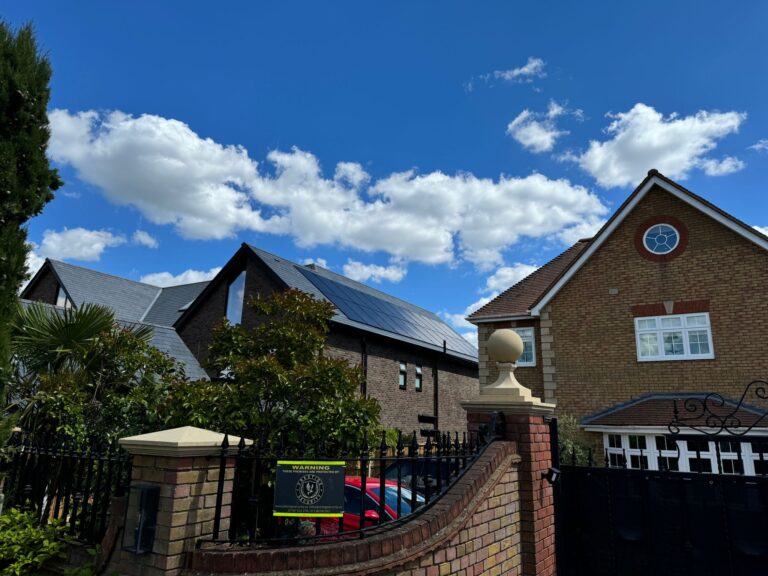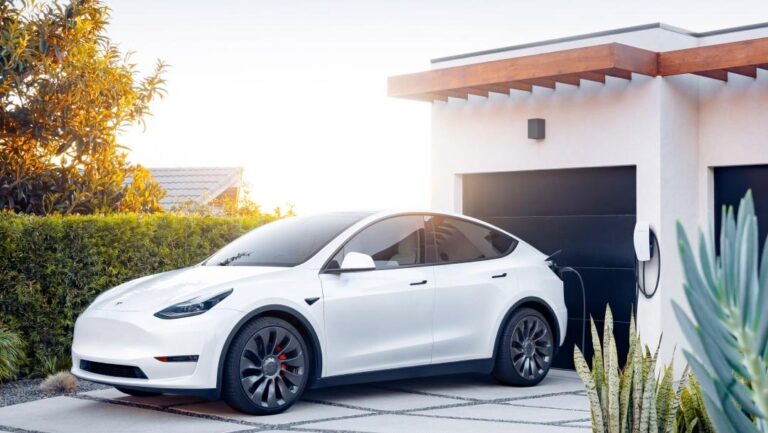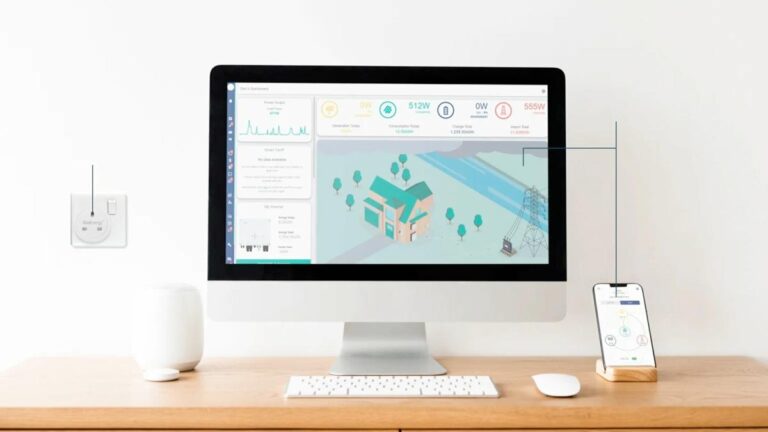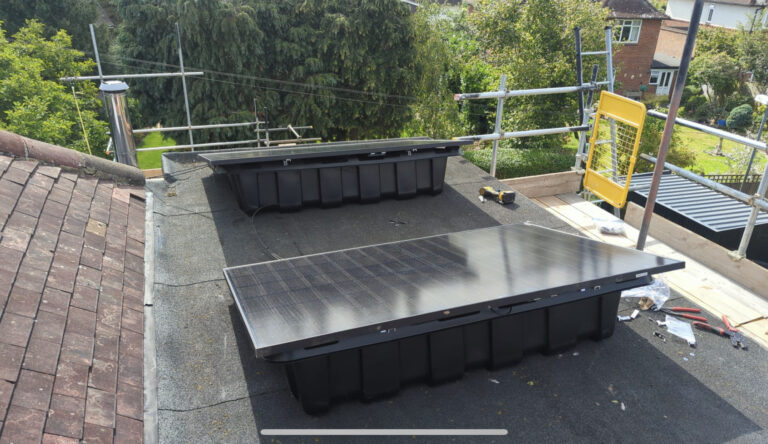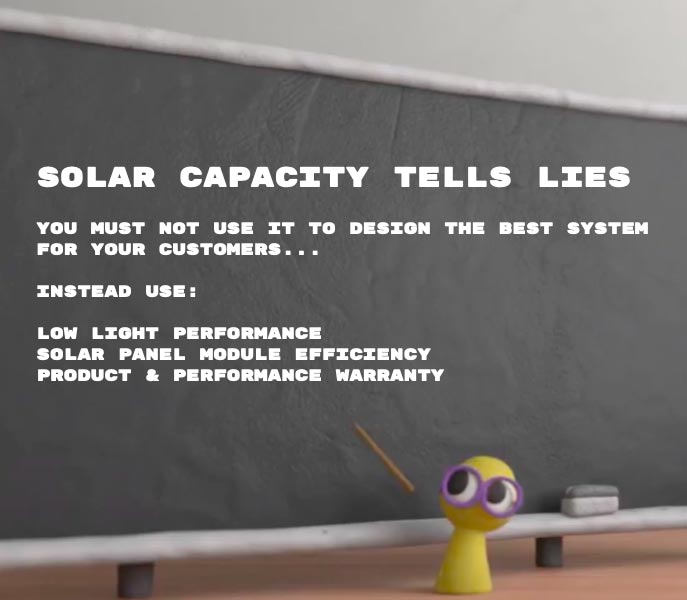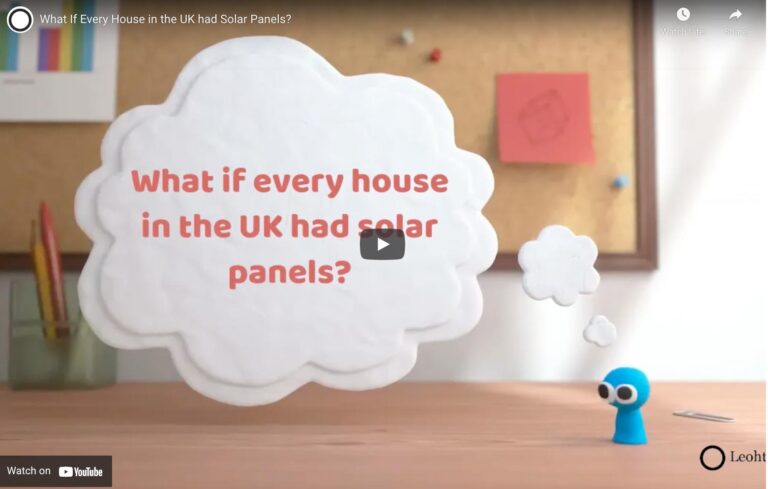Installing solar panels and battery storage will make an immediate impact on your energy bills, no matter what tariff you choose.
Did you know that the difference between electricity tariffs could be hundreds of pounds a year.
It’s worth taking the time to choose the right tariff.
In this article we’ll tell you what to look for so you can make the right choice.
Some energy tariffs are made to be used with solar and battery storage – such as Octopus Flux and Intelligent Octopus Flux (GivEnergy only at present). Whereas some are perfect as a solar and battery storage energy tariff but may require an Electric Vehicle – such as Octopus Intelligent.
Other tariffs are available, we are not paid by Octopus, however the other energy providers really haven’t shown up for their customers or home grown renewable energy. Most large providers in 2022 were charging the Government and business customers 66p/kWh whilst paying their customers 1.6-3p for that same energy. With the exception of Eon – their rates are still mostly unchanged – for this reason we will only be mentioning Octopus in this article.
If you have solar – get a smart meter! They’re free and will help the grid use more renewables as well as lower your bills/increase self-sufficiency..
What should I look for? A cheap import price or the best export price?
Imports Vs Exports
Your generation doesn’t matter in this exercise, only your imports and exports.
Imports higher = Import prices more important.
Exports higher = Export prices more important.
Have a look at your monitoring system and look for the total imports figure since installation (or by year). Note down the import figure….the example to our right has imported 1318 kWh since installation 11 months ago. He has exported 2037 kWh since installation.
Total solar generation is 6098 kWh which means he has consumed 4061 kWh of his generation and needed to import a further 1318 kWh, meaning total consumption including losses = 5379 kWh.
Remember, generation does not matter when choosing the right electricity tariff for your solar panel system.
What if you export more electricity than you import?
Best choice: Octopus Flux or join the waiting list for Intelligent Octopus Flux
If you export more than you import with either Octopus Flux or Intelligent Octopus Flux it is possible for you electricity bill to be negative.
You can improve further by shifting usage into off-peak period and exporting more energy during peak times.
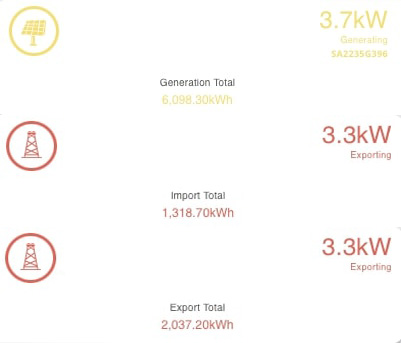
Imports x average import rate
= usage cost
1318 x 24p = £316
Exports x average export rate
= export income
2037 x 0.24p = £488.88
export income – usage cost
= Net energy cost
£488.88 – £316 == -£172.88
Standing charge
45p x 365 = £164.25
What if you import more electricity than your solar system exports?
Generation total: 3469 kWh
Import total: 1583 kWh
Export total: 1205 kWh
This solar system imports more electricity than it exports – but not by much. Octopus Flux may still be the best choice but as they have a 9.5 kWh battery – they are able to top up the battery at off-peak rates to supplement the solar generation.
They have an EV so are eligible for the Octopus Intelligent tariff. Exports earn 15p/kWh. Off-peak energy between 23:30 – 05:30 costs 7.5p/ kWh.
Meaning one unit of export pays for 2 units of off-peak energy.
If we import more than we export then a solar panel and battery storage system using Octopus Flux would be unlikely to lead to a negative bill, is there another tariff we could use to get a negative bill?
In this case, we need a tariff where exports are paid more than off-peak energy – getting more imports for every unit exported.
The example to the right shows that if they are able to use the battery to top up at off-peak rates (7.5p/kWh) This is more than paid for by our solar exports (15p/kWh).
What electricity tariff should you choose if you import much more than your solar system exports?
If you use a lot of energy compared to your exports – your best electricity tariff would be an off-peak tariff like Octopus Inteligent. Use the solar throughout the day and install enough battery storage so that your system can top up enough to supplement the solar generation.
Too much or too little battery storage would have a negative impact on ROI. A good inistaller will be able to model a solar panel system that’s just right based on your usage.
Which electricity tariff should I choose – rule of thumb
If you export 20%+ more than you import: Octopus Flux or Intelligent Octopus Flux
If exports are lower: Octopus Intelligent due to the export rate being able to pay for 2 units of off-peak energy.
If you import much more than you export – the cheapest off-peak tariff that allows you to charge the most would be your best option.

Imports x average import rate
= usage cost
1583 x 7.5p = £118.72
Exports x average export rate
= export income
1205 x 15p = £180.75
export income – usage cost
= Net energy cost
£180.75 – £118.72 = -£62.03
Standing charge
45p x 365 = £164.25

